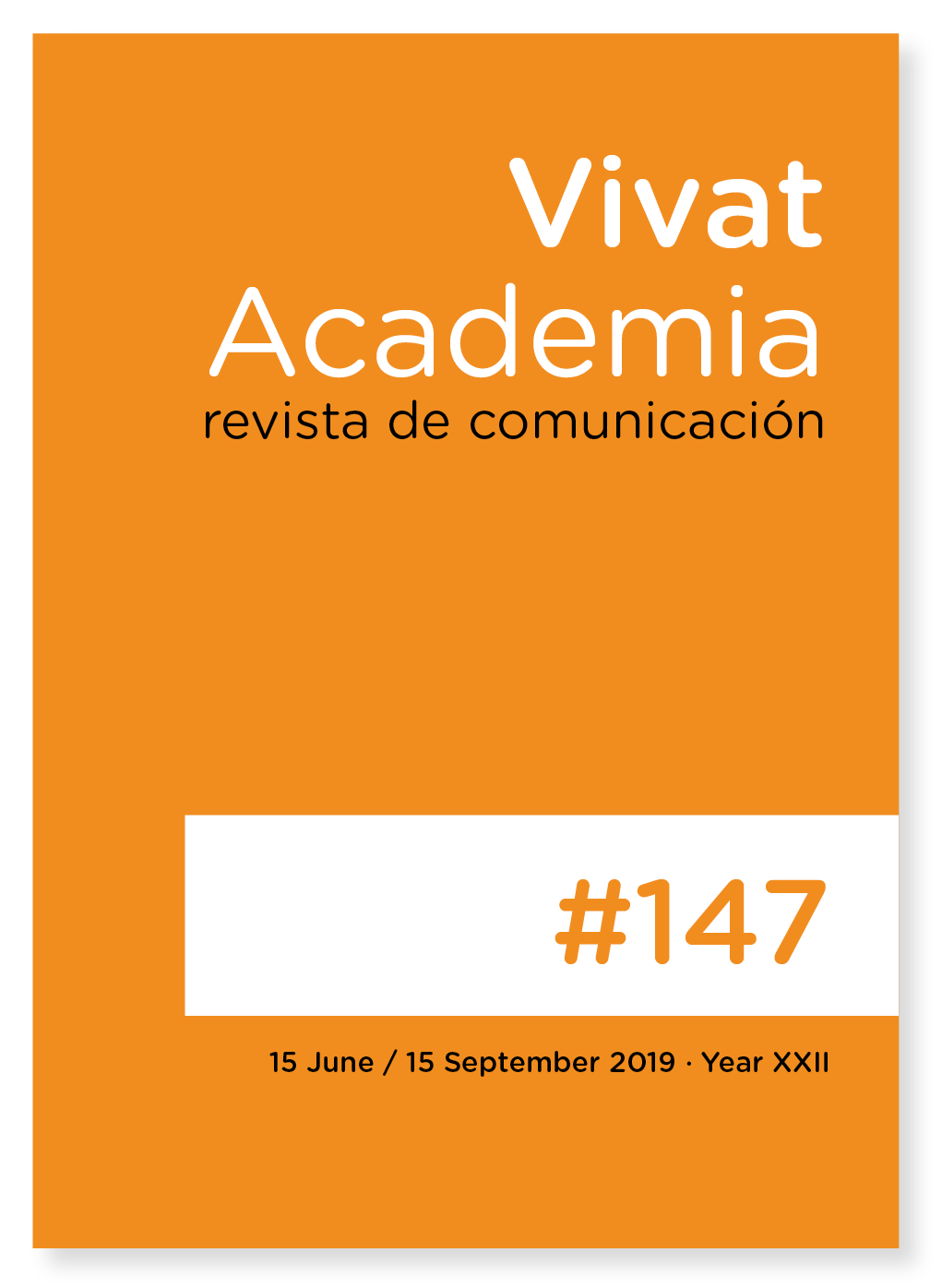Half-naked, gender and other factors on television spots. A neuroscience approach
Main Article Content
Abstract
This paper shows the results of an experiment in neuroscience on a group of 20 people of both sexes, whose electrodermal activity was measured simultaneously while they were watching TV spots. Also, we paid special attention to the analysis of gender differences and their attentional and emotional activation patterns. The results show that spots containing half-naked models or models only in underwear are significantly higher in average attendance (in both sexes) with respect to those without this feature. In addition, we also concluded that there were significant differences in relation to the familiarity of the audience with the brand in both sexes too (more attention is paid to known brands) Finally, it was also possible to emphasize that attentional activation occurs to a greater extent at the beginning and end of the spot, although it is more clearly seen in the case of women. Likewise, a common pattern of attentional activation may be suggested when a sound rupture occurs.
Downloads
Article Details
References
Aiger, M.; Palacín, M., y Cornejo, J. M. (2013) La señal electrodérmica mediante Sociograph: metodología para medir la actividad grupal. Revista Internacional de Psicología Social: International Journal of Social Psichology, 28(3), 333-347.
David, P., y Johnson, M. (1998). The Role of Self in Third-Person Effects about Body Image. Journal of Communication, 48(4), 37-58.
David, P.; Morrison, G.; Johnson M., y Ross, F. (2002). Body Image, Race, and Fashion Models. Social Distance and Social Identification in Third-Person Effects. Communication Research. 29(3), 270-294.
Dittmar, H., y Howard, S. (2004). Professional hazards? The impact of models’ bodysize on advertising effectiveness and women’s body-focused anxiety in professions that do and do not emphasize the cultural ideal of thinness. British Journal of Psychology, 43, 477-497.
Garrido Lora, F. (2007). Estereotipos de género en Publicidad. La creatividad en la encrucijada sociológica. Creatividad y Sociedad, 11, 53-71.
Karmarkar, U.; Yoon, C., y Plassmann, H. (2015). Marketers should pay attention to fMRI. Harvard Business Review. Recuperado de https://hbr.org/2015/11/marketers-should-pay-attention-to-fmri
Kang, M. (1997). The portrayal of women’s images in magazine advertisements: Goffman’s gender analysis revisited. Sex Roles. A Journal of Research. Gale Group.
Lindner, K. (2004). Images of women in general interest and fashion magazine advertisements from 1955 to 2002. Sex Roles. A Journal of Research, 51, pp. 409-421.
Martínez Herrador, J. L.; Garrido Martín, E.; Valdunquillo Carlón, M. I., y Macaya Sánchez, J. (2008). Análisis de la atención y la emoción en el discurso político a partir de un nuevo sistema de registro psicofisiológico y su aplicación a las ciencias políticas. DPSA. Documentos de trabajo del Departamento de Psicología Social y Antropología, 2. Recuperado de http://hdl.handle.net/10366/22533
Martínez Herrador, J. L.; Monge Benito, S., y Valdunquillo Carlón, M. I. (2012). Medición de las respuestas psicofisiológicas grupales para apoyar el análisis de discursos políticos. Tripodos, 29, 53-72.
Moreno, J. (2004). Iconos femeninos. Jordi González lanza el concepto de “marketing sensual”, con el que sale en defensa de la publicidad ante los ataques que ésta recibe por determinados usos de la imagen de la mujer. Anuncios, 1079, 30.
Moreno, R. & Martínez, M. M. (2012). Representación del hombre y de la mujer en la publicidad: análisis de los valores percibidos por el alumnado en función del género del protagonista del anuncio. Actas del I Congreso Internacional de Comunicación y Género. Sevilla, 5, 6 y 7 de Marzo de 2012. Sevilla: Facultad de Comunicación. Universidad de Sevilla.
Orzan, G.; Zara, I., y Purcarea, V. L. (2015). Neuromarketing techniques in pharmaceutical drugs advertising. A discussion and agenda for future research. Journal of medicine and life, 5(4), 428-432.
Reimann, M.; Castano, R.; Zaichkowsky, J., y Bechara, A. (2012) Novel versus familiar brands: an analysis of neurophysiology, response latency and choice. Marketing letters, 23(3), 745-759. doi: 10.1007/s11002-012-9176-3
Sanchez-Porras, M. J. (2013). Music persuasión in audio-visual marketing. The
example of Coca Cola. Historia y Comunicación Social, 18, 349-357. doi: 10.5209/rev_HICS.2013.v18.44333
Soloaga, P. (2007). Valores y estereotipos femeninos en la publicidad de moda de lujo en España. Anàlisi, 35, 27-45.
Steele, A.; Jacobs, D.; Siefert, C.; Rule, R.; Levine, B., y Marci, C. (2013). Leveraging Synergy and Emotion In a Multi-Platform World A Neuroscience-Informed Model of Engagement. Journal of Advertising Research, 53(4), 417-430. doi: 10.2501/JAR-53-4-417-430
Torreblanca, F.; Juarez, D.; Sempere, F., y Mengual, A. (2012). Neuromarketing: la emocionalidad y la creatividad orientadas al comportamiento del consumidor. 3Ciencias, revista de investigación. http://hdl.handle.net/10251/34357.
Vecchiato, G. et al. (2014). How to measure cerebral correlates of emotions in Marketing relevant tasks. Cognitive Computation, 6(4), 856-871. doi: 10.1007/s12559-014-9304-x.
Wilson, R.; Baack, D., y Till, B. (2015). Creativity, attention and the memory for brands: an outdoor advertising field study. International Journal of Advertising, 34(2), 232-261. doi: 10.1080/02650487.2014.996117





